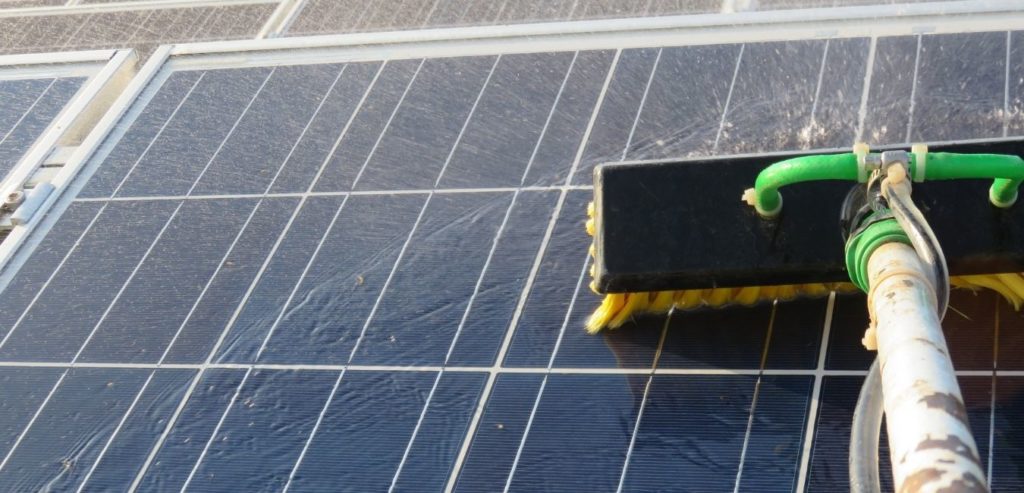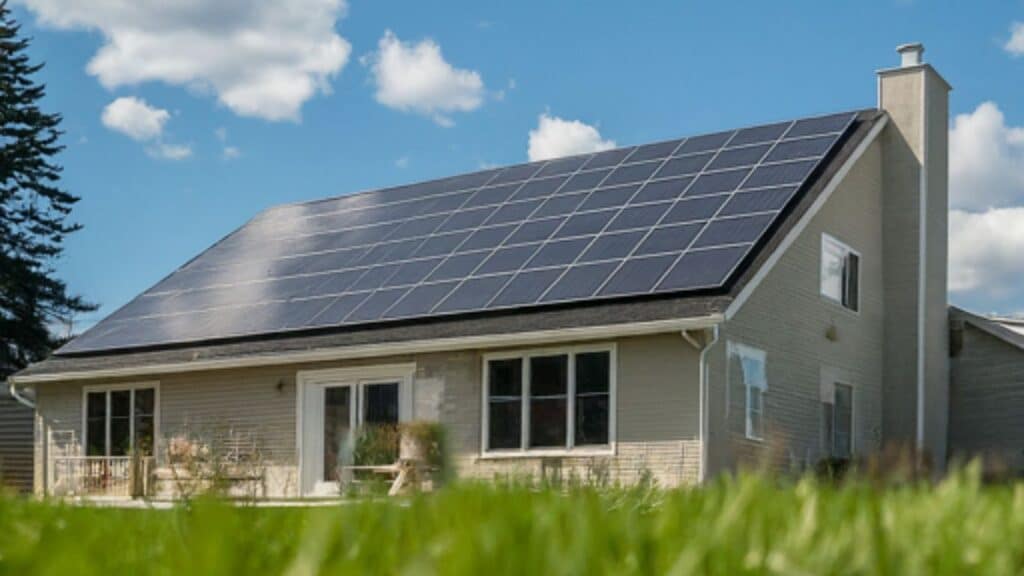Understanding Solar Panels
Sun-powered technology, known as solar panels, is rapidly gaining popularity as the world increasingly recognizes the importance of renewable energy sources. One of the key questions potential solar energy adopters have is: “How much electricity can solar panels produce?” Understanding the potential electricity production of solar panels assists in determining the feasibility and benefits of a solar installation.
What is Solar Panel Efficiency?
Solar panel efficiency refers to the percentage of sunlight hitting the panel that gets converted into usable electricity. This value is vital as it influences the electricity production of the panels. Factors like the type of solar panel (monocrystalline, polycrystalline, thin-film), location, and orientation can impact the efficiency. For instance, high-efficiency monocrystalline panels can convert over 20% of sunlight into electricity, offering significant benefits for limited roof spaces.
Calculating Solar Panel Output
To calculate the potential electricity production of solar panels, we measure in kilowatt-hours (kWh). The primary formula to estimate the solar panel output takes into consideration the panel wattage, sunlight hours, and local weather conditions.
Real Example
Let’s assume we still have a single monocrystalline solar panel of 250 watts, and we’re now located in Vancouver, Washington where there’s an average of 3.5 peak sun hours per day. Here’s how you would calculate the output:
- Find your solar panel’s rating (given on the panel). In our case, it’s 250W.
- Find out the peak sun hours for your location. For Vancouver, Washington, it’s 3.5hr/day.
- Multiply the two above to calculate a rough estimation of the output per day:
Output (kWh/day) = Panel Rating (KW) x Peak Sun hours (hours/day)
In our case, the solar panel rating needs to be converted to kW:
Panel Rating = 250W = 0.25KW
Output (kWh/day) = 0.25KW x 3.5hr/day = 0.875 kWh/day - If you want to calculate the output for an entire year, multiply this daily output by 365:
Output (kWh/year) = Output (kWh/day) x 365 (days/year) = 0.875 kWh/day x 365 = 319.375 kWh/year
So, a single 250W solar panel in Vancouver, Washington, could produce about 319.375 kWh of power in a year. As mentioned earlier, this is a rough estimate and actual solar panel output can vary based on factors like shading, orientation, tilt angle, maintenance, and more.
How Much Can One Solar Panel Save Me?
To calculate how much the solar panel’s power production would cost (or potentially save you) based on your electricity rate, you multiply the kWh produced by the price you pay per kWh.
Here’s the calculation for your situation with 319.375 kWh and a rate of $0.12 per kWh:
- Savings/Cost = Power Produced (kWh) * Electricity Rate ($/kWh)
- Plug in your numbers: Savings/Cost = 319.375 kWh * $0.12/kWh = $38.325
So, a single 250W solar panel in Vancouver, Washington could potentially save you about $38.32 in a year, given an electricity rate of $0.12 per kWh. Keep in mind, these are estimations and actual savings may vary.
Factors Affecting Solar Panel Production
There are numerous factors that can impact the electricity production of solar panels. Understanding these elements can assist in maximizing the energy output and longevity of your solar system.
Geographical Location and Seasonal Variations
Geographical location plays a significant role in solar power output. Regions closer to the equator generally receive more sunlight than locations further north or south. Therefore, the same panel may produce more power in California than in Washington State.
Moreover, the amount of daylight hours and the angle of the sun during different seasons will also affect solar energy output. For instance, your solar panels will produce more electricity during sunny summer days compared to shorter, possibly cloudy, winter days.
Weather Conditions
In addition to geographical location and seasonal variations, daily weather conditions can also influence the power output of your solar panels. While solar panels are built to withstand various weather conditions, including rain and snow, overcast and rainy days may result in less power output due to decreased sunlight.
Some studies suggest that after a cleaning rainfall, on a clear day, solar panels might become more efficient. However, consistent rainy or cloudy weather will reduce the amount of sunlight reaching the panels, hence decreasing the power generated.
Shading
Shading is another factor that can decrease the output of your solar panels. This can be anything from a tree causing shadow on your solar panels to dust and debris build-up blocking sunlight. Even partial shading can have a significant impact on the solar system’s power generation. Therefore, the placement of the panels should be optimized to reduce the likelihood of shading.
Panel Maintenance
Like any machine, the maintenance of solar panels is integral to their efficiency. Over time, panels may accumulate dust, dirt, bird droppings, leaves, and other debris, especially if they’re close to trees or in wind-prone areas. These can form a layer of shade, which can impact the functioning of the panels. A simple cleaning routine can help ensure your panels operate at their highest potential.

Getting to 100% Offset and its Difficulties
The goal of achieving a 100% offset with solar power entails generating enough solar energy to completely cover your electricity needs, effectively reducing your utility bill to zero. While this is an appealing concept, there are various challenges and conditions to consider:
System Sizing and Energy Consumption
Accurate estimation of your household’s energy needs is essential to determine the suitable solar panel system size to achieve a 100% offset. Conversely, implementing energy efficiency measures such as the use of energy-efficient appliances and LED lighting can help reduce the required size of your solar power system.
Optimal Orientation and Placement
To generate the maximum amount of power, solar panels must be strategically placed, allowing for the optimal angle and minimal shading. Roof characteristics, sun exposure, and neighboring structures can make finding the right placement challenging.
Local Regulations and Net Metering Policies
Rules surrounding solar panel installation and grid connection may differ depending on your geographic location. These rules may limit the size of your solar system or the amount of energy you can feed back into the grid, thus impacting your capacity to reach 100% offset.
Solar Accessibility
Geographical factors and local weather conditions might affect your ability to achieve a full offset. Regions with lower levels of sunlight and longer cloudy spells will require larger systems or greater energy storage capacity.
Energy Storage and Backup
Seasonal weather variations and daily fluctuations in energy consumption can affect the availability of solar power. Achieving a 100% offset may necessitate investing in energy storage systems, such as batteries, to cover periods when solar generation is low.
While reaching a 100% offset is an ambitious goal, overcoming these difficulties and understanding the specific conditions of your region will be pivotal to realizing the full potential of solar power. Even partial offset scenarios can still lead to significant energy savings, highlighting the value of solar energy as a sustainable alternative.
Future Trends and Innovations
The solar energy industry continues to evolve with emerging trends and innovative technology. Bifacial solar panels that capture sunlight on both sides and tracking systems that orient panels towards the sun are revolutionizing solar power. With these advancements, solar energy holds vast potential for meeting future global electricity demands.
Final Word
Understanding how much electricity solar panels can produce is essential in mapping the journey towards renewable energy adoption. These robust systems not only offer a reliable alternative to traditional energy sources but also contribute significantly to sustainability efforts. To explore this exciting field, make sure to research extensively and keep abreast of novel solar technologies, ensuring you make an informed decision that suits individual energy needs.


